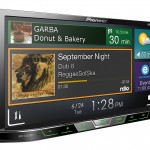
While more businesses are now aware of the benefits of harnessing data to glean business insights, it takes more than just empowering employees with analytics tools to make the most of out of data.
Many small businesses, for example, may not realise the importance of choosing the right data metrics, or have the knowhow to present data in a compelling way for users to find answers to questions.
JY Pook, Asia-Pacific vice president at Tableau, a data analytics software provider, offers some advice on what businesses can do to maximise the benefits from business data:
Connect the dots
Pook noted that one of the main challenges of working with data is that the information usually comes from different sources and resides in many different places. To get the full picture, employees need to have access to data from multiple sources. They also need to be able to blend the data, and have them analysed and presented in clear and easy-to-understand dashboards that facilitate decision-making.
Effective data analytics and visualisation practices offer users with full access to data, whether the data is residing in on-premise storage space, in the cloud, or both. Organisations that are empowering their staff with access to the right data across multiple sources, encourage employees to become more effective and efficient in their roles.
Blend your data
It can be easy to lose sight of the full potential of what you can derive from different data types coming from multiple sources, especially with overwhelmingly large quantities of data. For example, a sales dashboard with profit data alone – without territory, demographic or marketing data – provides less value as it only supports a limited range of decision making.
Blending your data from different sources and analysing it on a common field will allow a holistic view of things like goal and performance tracking, at every step of the process. This allows managers and decision-makers to extract the crucial details they need to understand the different segments of businesses.
Find the right ingredients
It is important to choose and add the right metrics for your dashboard. Metrics have to be relevant to the job at hand, but that does not mean you should include everything. Instead, be highly selective in deciding which metrics have earned a spot on your dashboard.
To decide on the right set of metrics, consider how they can contribute to your objectives and whether each one is truly necessary. Additionally, you need to ensure these contributions can be measured by designing a systematic and ongoing method of measurement. If you are operating in a highly competitive market, you should also consider including third-party market share metrics.
Most performance metrics allow businesses to discover what’s happening, but the right metrics allow users to gain insights into why it is happening. Be sure you can clearly explain how every metric on your dashboard connects to organisational objectives and the mission.
Presentation is key
Effective data analytics offers users freedom and flexibility to explore answers. Very often, this is achieved through different visual structures. You can tap on colours and filters on a visualised dashboard to share the complete picture, and help users better understand the information. Good visualisation presents data in a way that allows users to gain information and find answers to questions that standard reports just do not provide.
Furthermore, data visualisations allow users to see trends in data and enhance users’ ability in forecasting and planning. This can also be elevated with the use of real-time data feeds, giving you access to timely insights into your underlying data.
Use it on the go
Mobile data analytics tools allow users to access their data from any place, any time. This means mobile workers on the road, at their customers’ offices, or working remotely from halfway around the world, can have full access to data that they need. They are able to do the same data analysing work and collaborate with co-workers on the same dashboard.
These days, with enhanced on-site mobile analytics tools, users are even able to see data in real-time for on-the-spot decision making, allowing them to make data-backed decisions and answer mission critical questions almost immediately.
Stop, collaborate and listen
Most importantly, data analytics and visualisation need to be accessible for better collaboration. Users need to be able to access and interact with data dashboards to benefit from the information. Mobile analytics, combined with easily understandable data visualisations, allow for even wider collaborative efforts and for users to obtain full value from the data. As different users interact with and update the same data sets on dashboard, viewers will also get to gain unique perspectives on the information presented.







Good points Aaron. This is why it is important for marketers and businesses to choose the right platform in order for them to get the most out of their data. TapAnalytics understands the cost and complexity of importing, managing and capturing data and with it’s user-friendly interface and updated features, marketers can now easily get the data they need.